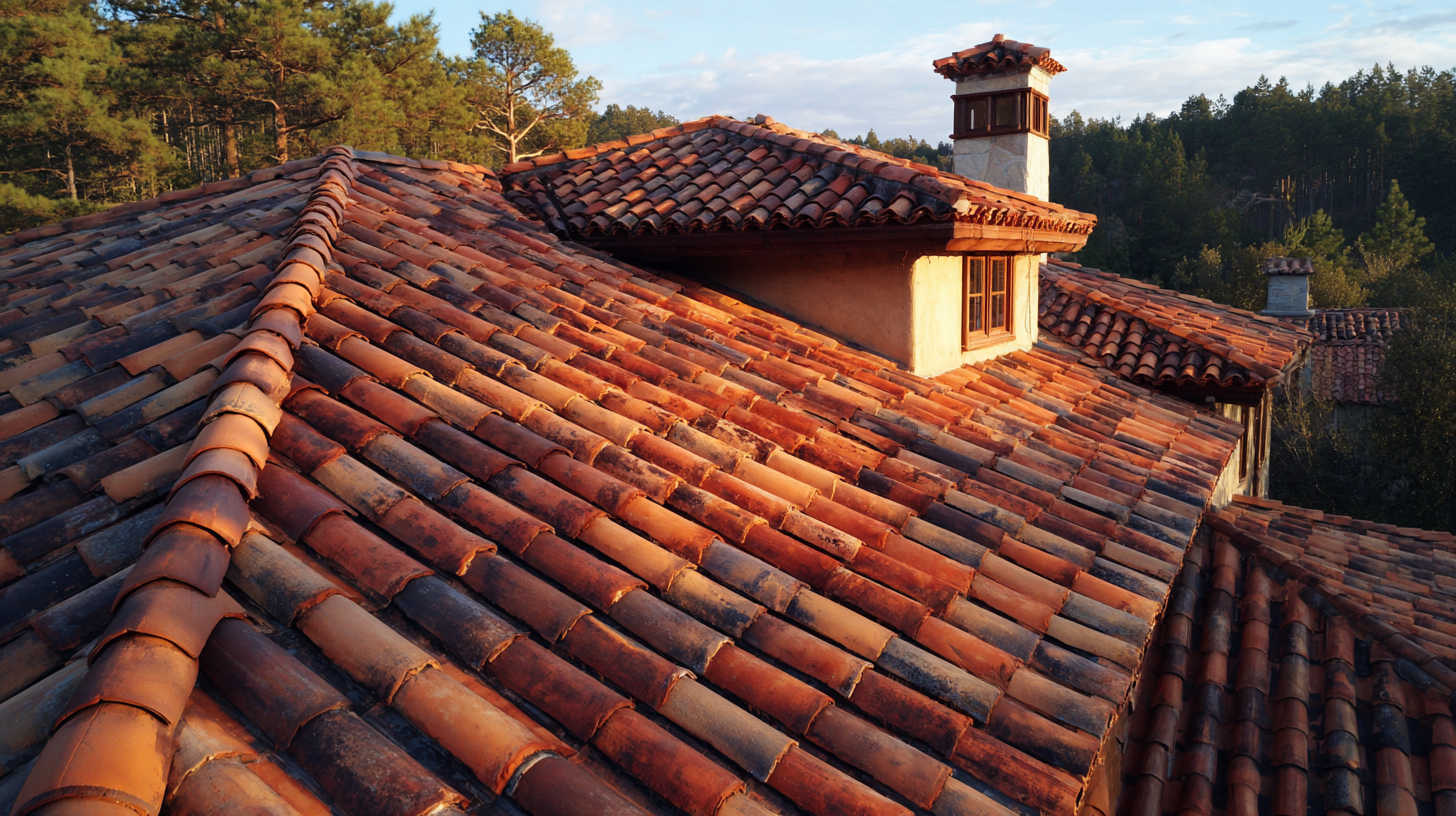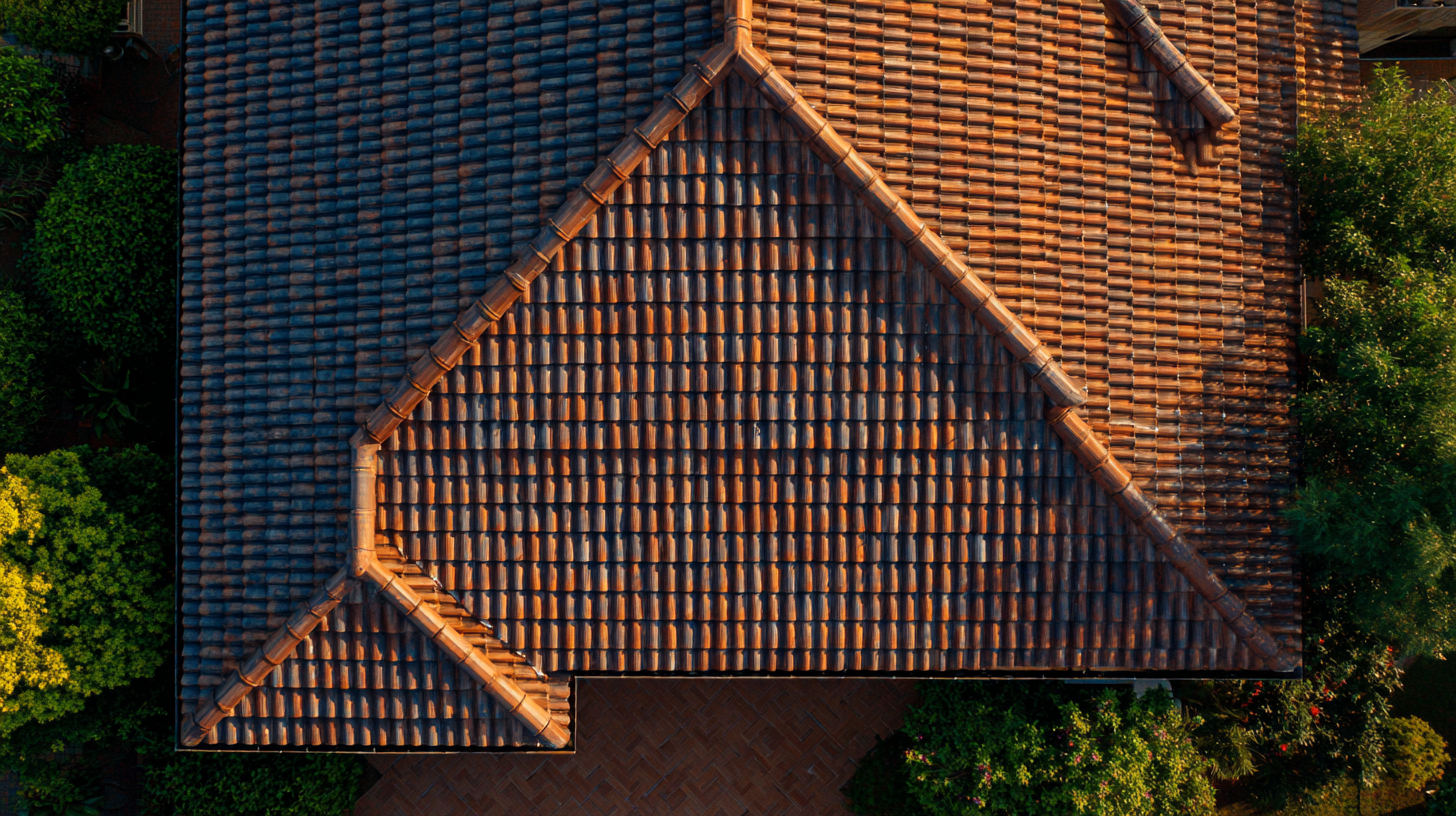
Leave Your Message
-
Phone
-
E-mail
-
Whatsapp

When it comes to roofing solutions, selecting the right materials is crucial for durability and aesthetics. Long Life Roof Tiles have emerged as a popular choice among homeowners, offering exceptional longevity and resilience under various weather conditions. According to a report from the National Roofing Contractors Association, high-quality roof tiles can last over 50 years, significantly outperforming traditional asphalt shingles, which typically have a lifespan of 20 to 30 years. This makes Long Life Roof Tiles not only a cost-effective investment but also an environmentally friendly option, as they reduce the need for frequent replacements. However, with numerous types available on the market, including clay, concrete, and slate tiles, it’s essential to understand the advantages and potential issues associated with each type. In this blog, we will explore how to choose the best Long Life Roof Tiles for your home, ensuring both durability and aesthetic appeal.

When selecting long life roof tiles for your home, choosing the right material is crucial for ensuring longevity and durability. According to recent studies, roofs typically last between 25 to 50 years, with performance heavily influenced by the roofing material and environmental conditions. Life Cycle Assessment (LCA) is becoming an essential tool in the construction sector, allowing homeowners to make informed decisions about materials that offer both longevity and sustainability. For instance, asphalt shingles are not only aesthetically pleasing but also provide affordability and robustness, making them a popular choice among homeowners.
Emerging trends in sustainable building materials highlight innovative production technologies that promise improved performance and environmental benefits. Materials such as metal roofs are gaining attention for their exceptional lifespan and energy efficiency, often outperforming traditional options like asphalt. This shift towards sustainable materials is aligned with the growing emphasis on achieving a circular economy in the construction sector, where materials are selected based not only on their durability but also on their impact throughout their lifecycle. By considering these factors, homeowners can ensure that their investment in roof tiles will enhance their property while contributing to long-term sustainability goals.
When considering roofing solutions, the benefits of sourcing materials from Chinese manufacturers are paramount. With the ongoing growth in the roofing market, projected to reach approximately $101.9 billion by 2027, China’s manufacturing capabilities offer a competitive advantage through cost-effective production and advanced technology. The Chinese roofing industry has made significant strides in quality assurance and innovation, enabling designers to integrate durability and aesthetics into roofing choices.
Moreover, as the global roofing materials market expands, with expectations to grow from $140.48 billion in 2025 to $188.59 billion by 2033, the influence of Chinese manufacturing becomes even more evident. The variety of materials available, from traditional tiles to modern TPO membranes, provides homeowners with choices that not only cater to specific architectural styles but also offer sustainable options. The emphasis on eco-friendly materials, such as natural fiber composites, aligns with an increasing trend towards sustainable building practices, making Chinese manufactured roofing materials a viable option for environmentally conscious consumers.
| Tile Type | Material | Lifespan (Years) | Cost per Square Meter ($) | Water Resistance | UV Resistance | Manufacturing Origin |
|---|---|---|---|---|---|---|
| Ceramic Tiles | Clay | 50 | 15 | High | Good | China |
| Slate Tiles | Slate | 100 | 40 | Medium | Excellent | China |
| Concrete Tiles | Concrete | 50 | 20 | High | Good | China |
| Metal Tiles | Steel/Aluminum | 70 | 25 | Very High | Good | China |
| Asphalt Shingles | Fiberglass/Organic | 30 | 8 | Medium | Fair | China |
When selecting roof tiles for your home, durability is paramount. According to a report from the National Roofing Contractors Association (NRCA), the average lifespan of roofing materials can vary significantly, with asphalt shingles lasting around 15-30 years, while clay and concrete tiles can endure for 50 years or more. This longevity not only reduces the frequency of costly roof replacements but also minimizes environmental impact, a benefit noted in the 2022 Green Building Report, which highlights that longer-lasting materials contribute to lower waste generation.
**Tips:** Choose materials like clay or concrete tiles, which are not only durable but also resistant to harsh weather conditions. It's beneficial to evaluate the warranty provided by manufacturers; long warranties typically indicate higher confidence in durability.
Additionally, understanding local climate conditions can help optimize your choice. The Asphalt Roofing Manufacturers Association (ARMA) states that tiles designed for specific climates—like those resistant to high winds or extreme temperatures—can substantially increase the performance and lifespan of your roof. Investing in the right roofing material is crucial; it protects your home while providing peace of mind for years to come.
**Tips:** Always consult with a professional roofing contractor who can offer insights into the best materials suited for your area and ensure proper installation, which is critical for maximizing durability.

When selecting long-life roof tiles, it's essential to find a balance between cost and quality. According to the National Roofing Contractors Association, the average lifespan of asphalt shingles is approximately 20 years, while high-quality tiles can last from 50 to over 100 years. Investing in durable roofing materials may seem like a higher upfront cost, but the long-term benefits far outweigh the initial expenses. Reports indicate that homeowners can save up to 30% on maintenance costs over the lifespan of their roof by choosing quality tiles.

The global roofing materials market is witnessing significant growth, projected to expand from USD 140.48 billion in 2025 to USD 188.59 billion by 2033, with a robust CAGR indicative of rising demand for quality roofing solutions. This surge is influenced by various factors, including the increasing focus on sustainable building practices and the enhancement of quality standards across the industry. As homeowners become more aware of the long-term benefits of durable roof tiles, the demand for high-quality materials continues to rise.
In addition to the general market trends, a notable shift is observed within specific segments, such as the bituminous roofing category, which is expected to gain significant traction through 2029. This indicates a wider acceptance of roofing products that not only meet aesthetic demands but also promise longevity and resilience. The ongoing evolution of roofing materials, influenced by advancements in technology and materials science, sets a new benchmark for quality that consumers increasingly expect in roofing solutions. As a result, manufacturers are compelled to adapt, ensuring their offerings align with these elevated quality standards while addressing the diverse needs of the global market.